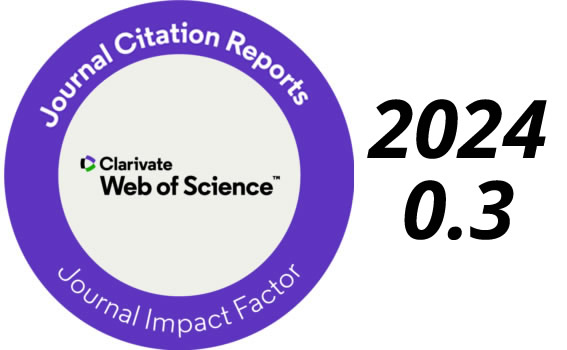Evaluation of the acute toxicity of IHPLUS® on the biomodel water quality indicator: Poecilia reticulata
DOI:
https://doi.org/10.24850/j-tyca-2024-06-09Keywords:
Bioproducts, ecotoxicology, efficient microorganisms, guppy fishAbstract
Conventional agriculture depends on the application of fertilizers in order to achieve higher yields; however, it is necessary to strike a balance between their benefits and the alterations they may cause to ecosystems. International organizations regulate their use and commercialization taking into account their efficacy and safety. IHPLUS®, produced by the Experimental Station of Pastures and Forages "Indio Hatuey" (Cuba), has shown to be effective in different crops and the purpose of this study is to evaluate the effects on water quality in the bioindicator Poecilia reticulata. The fish were exposed to the product, in a static regime for 96 h, at the concentration effective in agriculture (6 %) or diluted to 106 CFU/mL as recommended by EPA OPPTS 885.4000. A group treated with the 6 % product but sterilized and a control group that received no treatment were also included. They were observed for 30 days post-inoculation and weight, mortality and other sublethal effects were assessed. Subsequently, the mean lethal concentration (LC50) and the influence of pH on fish mortality were determined. It was found that at 6 % it caused adverse clinical events and lethal effect in the biomodel. The histopathological lesions corresponded for both the activated and inactivated products. The LC50 was 3.19 %, the toxicity being associated to the acid pH and not to the microbial load present in the bioproduct. It is concluded that IHPLUS® is safe for Poecilia reticulata at concentrations below 3 %.
References
Abdallah, J. S., Thomas, B. S., & Jonz, G. M. (2015). Aquatic surface respiration and swimming behavior in adult and developing zebrafish exposed to hypoxia. Journal of Experimental Biology, 218, 1777-1786.
EPA, Environmental Protection Agency. (2009a). Microbial pesticide test guidelines: OPPTS 885.2000 background for residue analysis of microbial pest control agents (EPA 712–C–96–328). Recuperado de https://www.regulations.gov/document/EPA-HQ-OPPT-2009-0159-0028
EPA, Environmental Protection Agency. (2009b). Microbial pesticide test guidelines: OPPTS 885.4000 background for nontarget organism testing of microbial pest control agents (EPA 712–C–96–328). Recuperado de https://www.regulations.gov/document/EPA-HQ-OPPT-2009-0159-0028
EPA, Environmental Protection Agency. (2016). Fish acute toxicity test, freshwater and marine. United States Environmental Protection Agency. Prevention, Pesticides and Toxic Substances (7101) (EPA OPPTTS. 850.1075). Recuperado de https://www.regulations.gov/document/EPA-HQ-OPPT-2009-0154-0035
Díaz-Solares, M., Martín-Martín, G., Taymer, F., Fonte, L., Lamela-López, L., Montejo-Sierra, I., Esquijerosa, Y., Ojeda-García, F., Medina-Salas, R., Ramírez, W., Lezcano-Fleires, J., Pentón, G., Peter-Schmith, H., Alonso-Amaro, O., Catalá-Barranco, R., & Milera-Rodríguez, M. (2020). Obtención y utilización de microorganismos nativos: el bioproducto IHPLUS®. Proyecto Biocarbono. Cuba. Recuperado de https://www.researchgate.net/publication/339916260
FAO, Organización de las Naciones Unidas para la Alimentación y la Agricultura. (2019). Código Internacional de Conducta para el Uso y Manejo de Fertilizantes. Roma, Italia: Organización de las Naciones Unidas para la Alimentación y la Agricultura.
Henrique, L., Araújo, V., John, D., & Rantin, T. (2018). Control of air-breathing in fishes: Central and peripheral receptors. Acta Histochemica, 120(7), 642-653.
Mącik, M., Gryta, A., & Frąc, M. (2020). Biofertilizers in agriculture: An overview on concepts, strategies and effects on soil microorganisms. Advances in Agronomy, 16, 31-87.
Megías, M., Molist, P., & Pombal, M. (2018). Técnicas histológicas. TINCIÓN. Atlas de Histología Vegetal y Animal. Vigo, España: Departamento de Biología Funcional y Ciencias de la Salud, Universidad de Vigo.
Naciones Unidas. (2015). Sistema globalmente armonizado de clasificación y etiquetado de productos químicos (SGA) (6ª ed.). Nueva York, EUA, y Ginebra, Suiza: Naciones Unidas.
Ng, J. F., Ahmed, O. H., Jalloh, M. B., Omar, L., Kwan, Y. M., Musah, A. A., 6 Poong, K. H. (2022). Soil nutrient retention and pH buffering capacity are enhanced by calciprill and sodium silicate. Agronomy, 12, 219. DOI: 10.3390/agronomy12010219
OECD, Organización para la Cooperación y el Desarrollo Económicos. (2019). Test No. 203: Fish, acute toxicity test, OECD guidelines for the testing of chemicals, Section 2. DOI: 10.1787/9789264069961-en
Palacios, H. S., Sandoval, C. N., Bueno, M. C., & Manchego, S. A. (2015). Estudio microbiológico e histopatológico en peces tetra neón (Paracheirodon innesi) de la amazonía peruana. Revista de Investigaciones Veterinarias del Perú, 26(3), 469-483.
Pardo, C. S., Suárez, M. H., & Pertuz, B. V. (2009). Interacción de los suelos sulfatados ácidos con el agua y sus efectos en la sobrevivencia del bocachico (Prochilodus magdalenae) en cultivo. Revista Colombiana de Ciencias Pecuarias, 22(4), 619-631.
Ramírez, P., & Mendoza, A. (2008). Ensayos toxicológicos para la evaluación de sustancias químicas en agua y suelo. México, DF, México: Secretaría de Medio Ambiente y Recursos Naturales.
Riaz, U., Murtaza, G., Anum, W., Samreen, T., Sarfraz, M., & Nazir, M. Z. (2021). Chapter 11. Plant growth-promoting rhizobacteria (PGPR) as biofertilizers and biopesticides. In: Hakeem, K. R. et al. (eds.). Microbiota and biofertilizers. DOI: 10.1007/978-3-030-48771-3_11
Santillán, M. L. (2016). Así funcionan los biofertilizantes. Ciencia UNAM. Ciudad de México, México: Universidad Nacional Autónoma de México (UNAM). Dirección General de Divulgación de la Ciencia (DGDC). Recuperado de https://ciencia.unam.mx/leer/570/Asi_funcionan_los_biofertilizantes
Santos, D., Luzio, A., Coimbra, A., Varandas, S., Fontaínhas-Fernandes, A., & Monteiro, S. (2019). A gill histopathology study in two native fish species from the hydrographic Douro Basin. Microscopy and Microanalysis, 25(1), 1-8. DOI: 10.1017/S1431927618015490
Serrano, R. (2003). Introducción al análisis de datos experimentales: tratamiento de datos en bioensayos (pp. 145-160). Castelló de la Plana, España: Universitat Jaume I.
Sudha, V., & Baskar, K. (2017). Importance of aquatic toxicology. Entomology, Ornithology & Herpetology: Current Research, 6(2), e126.
Urku, C. (2020). Histopathology and antibiotic susceptibility of Aeromonas hydrophila isolated from diseased guppy (Poecilia reticulata). Erzincan Üniversitesi Fen Bilimleri Enstitüsü Dergisi. Recuperado de https://www.researchgate.net/publication/340063729
Downloads
Published
How to Cite
Issue
Section
License
Copyright (c) 2024 Tecnología y ciencias del agua

This work is licensed under a Creative Commons Attribution-NonCommercial-ShareAlike 4.0 International License.
By Instituto Mexicano de Tecnología del Agua is distributed under a Creative Commons Attribution-NonCommercial-ShareAlike 4.0 International License. Based on a work at https://www.revistatyca.org.mx/. Permissions beyond what is covered by this license can be found in Editorial Policy.









